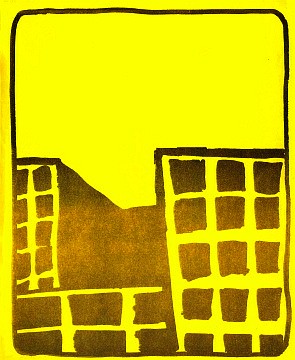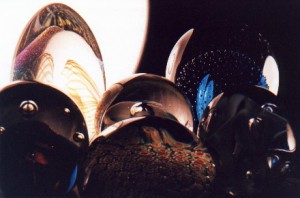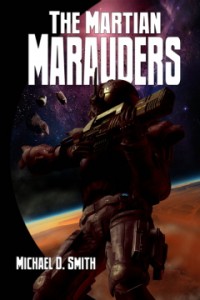 I never thought much about my stint as editor of the Wiess Crack until I began to see it as another piece of lost energy I wanted to reclaim from the beginning of my writing life.
I never thought much about my stint as editor of the Wiess Crack until I began to see it as another piece of lost energy I wanted to reclaim from the beginning of my writing life.
In the small enclosed world of Rice University, late 1971 to May 1974, there was “word of mouth” about the Wiess Crack, a weekly humor publication consisting of two legal sized sheets folded in half to make an eight-page magazine. It was of course only one of a million things going on in that environment, but the Crack had achieved that word of mouth status, and it was read, talked about, looked forward to each week. As a web site at Rice today it would likely be ignored, just one of many accessible but psychically neutral ways to waste time.
Wiess rhymes with Rice, with a long “i.” The silly pun of the title wouldn’t work otherwise. Some friends from high school in Northbrook, Illinois wondered if I’d suddenly developed a speech impediment in 1970. Hadn’t I told them I was going way south to “Rice”? What was this “Wiess” business? And then I’d explain that Wiess College was my residential college, one of eight at Rice …
Some of the Wiess Crack’s popularity was due to its previous incarnation as a dull college student humor rag long before I took it over, as well as the fact that it was free and traditionally placed outside the dining commons of all the residential colleges shortly before Thursday evening dinner. However, I and my two principal accomplices, Bear and Joe, took it in an entirely new direction that caused renewed interest and controversy.
Maybe I’m remembering the Wiess Crack because of its similarities with the blog. My self-imposed weekly schedule, not always adhered to, was definitely a lot more structured than is my complete lack of a blogging schedule, but the pressure to keep putting something out–or else admit that the enterprise is stone dead–is similar. Then there is the same kind of feeling about those issues or posts that seem mystically fated to perfectly come together, that almost write themselves, versus those that feel like an obligation and a chore. Or those that weirdly combine both elements in one package.
Another similarity is the marriage of visual and verbal, and the added concentration needed to properly mesh image and word on this two-dimensional grid.
The First Year
I had three years with the Wiess Crack, and they all have different feels. The first year saw fifteen issues and a great deal of high energy experimentation. In Fall 1971, at the beginning of my sophomore year at Rice, the student editor of the Wiess Crack quit after producing a truly crappy and listless thing called “Atomic Crack!,” which I still have somewhere. I didn’t know–still don’t–how long the Thursday evening Wiess Crack had been published, though I found that it had a $200 yearly budget from the college and I’d seen enough issues to know that “Atomic Crack!” was the last gasp of a reasonably long tradition. Someone suggested I step into the vacuum that no one else had the slightest urge to fill, and instantly I knew I’d convert the abandoned putrid joke rag into a countercultural literary magazine. But in an unconscious nod to something I knew nothing of, namely marketing and product recognition, I kept the silly Wiess Crack name and logo, which we used to great advantage later on. The stupid pun would evolve into investigation of the crack in our mental foundations …
In point of fact I probably couldn’t have changed the name–I’m sure I would have lost the budget–but it never occurred to me to try, except in individual issues like The Death Crack.
The main contributors were, me, Joe, and Bear, and the three of us also became the core of our theater troupe Cosmic (sometimes Kozmik) Productions starting in January 1972. I only used my name and others’ in the second and third issues. After that everyone was always anonymous and, except for pseudonyms, uncredited. I became the Mysterious Editor, Bear became the Mysterious Anonymous Drama Critic, and Joe the Mysterious Contributor. But Cosmic Charley occasionally contributed bizarre moody pieces that still leave me shaking my head in wonder, and there were several others who contributed some great stuff. I can’t believe I had the gall to print a couple stories from my friend at Yale (found on the blog roll to the right) without asking his permission! Though I did credit him at least once.
In some of the early issues I allowed submissions from outside our group, but that proved disastrous. The quality was atrocious, not much better than what had appeared in old Wiess Cracks–and I’d only included them out of obligation to some idea of openness. Then I put a halt to that. By mid-February 1972 I was consciously aware that, as I put it, The editor must be a bastard. Even so, my own vision was often thwarted by my colleagues, for whom I’d be saving space but who might turn in some pun-crammed obscenity at the last instant. On some occasions I’d get so exasperated at something I considered brainless or offensive that I’d change a word or phrase, much to the writer’s subsequent displeasure upon opening his copy of the newly-printed Crack.
Yet I often stuffed some of my own mediocre writing in there–sometimes stream of consciousness stuff made up on the stencil–especially to fill the final page. And I had my own blind spots, as in the second year when I inserted as many Dylan references as the publication could safely hold.
Yet I was usually happy with the difference between my style, Joe’s, and Bear’s, and as I typed their work I would flow into it and appreciate it from their point of view. Overall, the triangulation of these three styles usually produced intriguing surprises, and often my cohorts’ jokes and trivia balanced something overwrought in my own work.
But this brings up the great tension theme running through all the Wiess Cracks. I was ambivalent about humor, especially the Rice brand, and not until my first real novel Akard Drearstone a few years later was I able to reconcile the humorous and the serious in my own writing. I wanted the Crack to be a literary magazine, but I struggled with my contributors’ jokiness and their fondness for salaciousness and trivia. At Rice, “humorous” meant an above-it-all, obscene, supercilious immaturity which I called “college boy.” And it was it dull. And there was so much of it around. After all, it was precisely this kind of trivial consciousness that disgusted me enough to want to head the Crack in a clear new direction. I wanted to chart passionate literary insanity, yet I admit I myself was often drawn to the jokiness. I think I was really looking for something like Jorge Luis Borges/The Twilight Zone. I hit that a few times, and Joe was a master at it, and those moments were what counted for me.
I was never fully in control until the last issue in April 1974, when I secretively made my own vision stick, sprang it on the public, and paid $150 for the experience.
In January 1972 we decided to put on three plays: my Total Annihilation: Camouflage!, one by Bear, and Ionesco’s Jack, or the Submission at Jones College, one of the two women’s residential colleges. Here Kozmik Productions was born, and we went on to produce a few more performances during our Rice time. However, Bear’s play was considered sexist by the Jones women and was canceled. Though we considered two Harold Pinter plays as a substitute, nothing came of that, so we were left with me and Ionesco. Bear directed Total Annihilation, in which I played the War Correspondent. There was a definite synergy between the production of this play and the creation of sophomore year Wiess Cracks. And I found I could use the Wiess Crack apparatus to make handbills for the plays.
What I Learned in Editor Mode
Basically, it was decision-making and responsibility. Writers can resent editors the way a peon worker can resent management. The peon knows he can do a better job until he gets a promotion into management and finds out that the weight of responsibility changes everything. So at core I sympathize with editors.
On a weekly basis, now aiming for Fridays instead of Thursdays, I gathered the materials, organized them and made final decisions, estimated how much could be typed into the available number of pages, drew the cover art, brought the art over to the print shop in the Fondren Library basement, typed the mimeograph stencils, got them to the Wiess secretary who ran off the copies on the Wiess mimeograph machine while incorporating the cover art (and later some interior art, which made things more complex), picked up the copies, collated and folded them (often with happy folding parties), and distributed them to eight residential colleges. Setting up the page parameters (8 and 1, 2 and 7, 6 and 3, 4 and 5) was simple at first, but grew into a major calculation effort by the time of the Two Hundred-Page Thousand-Page Wiess Crack.
I had use of the official Wiess Crack typewriter, an IBM Type B (first marketed in 1956, supplanted by the Type C in 1959). For typos, you spread on blue correction fluid which had to dry before you typed over it. Typing on blue stencil masters was new to me, but hey, I was a Rice student and could master that much. You insert the legal stencil landscape-wise on the 14”+ carriage, type Page 2 on the left half of the first stencil, then yank it out, then type Page 3 on the right-hand side of the second stencil, then type Pages 4 and 5 on the left and right of the third, then you put Stencil 2 back in to get Page 6 and then Stencil 1 back in to get Page 7. You may or may not have a half stencil for Page 8 to combine with the half page cover art you just got back from Fondren Library.
Probably the most difficult aspect of being editor was dealing with late, nonexistent, or mediocre/jokey submissions. So often it would be 1 AM on Friday, eight hours before I was to deliver the stencils for printing, and I’d be sitting at the Wiess Crack typewriter looking at a half-typed Page 5 and wondering where Bear or Joe’s story was. Sometimes I was handed something brilliant at 1:16. Other times … other times I went through my 1968-1971 writing folders looking for something …
But generally, we all had so much to contribute that I began expanding the Crack, putting out twelve, sixteen, and twenty-four-page issues, much to the annoyance of our Wiess secretary who had to run off all our precocious wisdom. I don’t remember how many copies we usually ran, but I would guess about 400, putting fifty at each residential college.
The Second Year
I only put out ten issues my junior year at Rice, but these consisted of 176 pages (I just counted) to the first year’s 152. I was still loyal to the countercultural literary magazine concept, but I had other things going on and by now the Crack felt more like an obligatory job. But The Eighty-Page Sex-Porno Extravaganza Crack that came out in January ’73–and had little to do with either subject–broke new ground. It included my first long sustained story (“The Cleaveriad”) and there was plenty of space to let the writers get expansive. The last issue of the year, The Death of Wiess College Crack, was a minor masterpiece and completely summed up my Spring 1973.
In preparing that spring to put on the immortal rock opera Beaver’s First Fuck, which Joe and I cowrote with some musician friends in order to investigate Ward, June, Wally, and the Beaver–what Joe termed America’s House of Atreus–I discovered that it was possible for Joe and me to stay up to 5 AM on Michelob and hack out a brilliant if typo-rich rough draft stencil devoted to marketing this play. That Wiess Crack got at least two hundred people crammed into the Wiess Commons for the play’s sole performance one early April Friday at eleven PM.
The Third Year
Around September of our senior year Joe and I were having a couple pitchers at the Zodiac Bar when we got the idea for The One Thousand-Page Wiess Crack. Around this time we also began thinking about how Kozmik Productions might go on after we graduated. We bought a $60 mimeograph machine and used it for a couple projects, made some plans for plays, and did put on some in November. Our second semester we got some sort of award/grant/permission to make a video of Beaver’s First Fuck, which turned out to be a major pain and which I lost interest in and let our director finish up on his own. I still recall my plans for doing a whole book of woodcuts and somehow using the mimeograph machine to publish it. But much of this planning was too vague for the real world. I think Joe and I both knew that Kozmik Productions wasn’t going to go much beyond May 1974.
In any case, in the Fall of ’73 I went before the Holy Wiess College Cabinet and proposed that I take the entire $200 Wiess Crack budget to create one issue of 200 copies of a Thousand-Page Wiess Crack. My request was approved, why I’m not sure. But despite the fact that what Joe and I originally envisioned was something akin to a religious revelation of everything we had experienced in the last four years, it soon became apparent that 1,000 pages was way too ambitious. I even took some old unfolded bad Crack runs and made a prototype Thousand-Page Crack just to see what it would look like. Imagine folding half a ream of legal-sized paper and you get an idea of how awkward and immense it was.
So it became the Two Hundred-Page Thousand-Page Wiess Crack, and even that was almost more than I could handle. To this date I wince at the monumental effort of collecting, organizing, and typing up all that verbiage on those blue stencils. I had to draw up a vast master plan to keep track of which pages would be on which stencil masters. There were several sides of illustrations that had to be matched with the correct stencils on the obverse. Collating 400 copies of fifty double-sided legal sheets of paper took days and days. Even folding the pages required new methods–you can’t just fold an entire copy in half, you have to make little groups of subfolds and then collate those. I did have some help on the folding but did everything else on my own. I still don’t understand how it all came together in the midst of a last semester so busy that I had to quit my part-time job in order to finish all my projects.
The 200-pager included greatest hits of all previous issues, as well as chapters from my second novel, The Fifty-First State of Consciousness. I was determined to make the 200-pager a solid, high-quality vision that would sum up my Rice experience. I took a lot of time with the yellow cover and planned every page so that I didn’t need to include any fluff as space filler. I wanted nothing in that last issue I wasn’t fully proud of, in either my own work or that of contributors.
For some reason the deal called for me to pay Wiess College back the $200 after I’d sold the copies. I made 400 copies and sold them for $.50 each. But I was chagrined that I made only $50 in sales, and I was upset than my Rice fan base was apparently so fickle that they’d only like my stuff when it was free.
However, the flip side is that I sold 100 copies, which really was decent. I wrote a check to Wiess College for $150, and when I got married and moved to Dallas, I gave Joe the huge box of the unsold issues, close to 300 Two Hundred-Page Thousand-Page Wiess Cracks. I still have ten or so copies.
Goodbye Crack
 To the right is the cover of the Goodbye Crack issue of May 1972–the end of our “first season”–which shows me as the Orange Rhinoceros, then Bear, then Joe in his alter ego of Bullwinkle, the head of which he drew and I pasted into my drawing–in an homage to the cover of Cream’s Goodbye album. I’m pretty sure the cover suggestion came from Bear; I would never have thought of that myself.
To the right is the cover of the Goodbye Crack issue of May 1972–the end of our “first season”–which shows me as the Orange Rhinoceros, then Bear, then Joe in his alter ego of Bullwinkle, the head of which he drew and I pasted into my drawing–in an homage to the cover of Cream’s Goodbye album. I’m pretty sure the cover suggestion came from Bear; I would never have thought of that myself.
A Google search on “Wiess Crack” found a 2004 discussion post hinting at the Wiess Crack’s existence in the mid-1990s, but the writer was vague about time, and I have no idea what really happened to the Crack after May 1974. There may be a few copies of our issues in the Fondren Library archives.
Finally, here is the list of our issues:
1971-1972
In Harmony With the Cosmic C (almost), 11/18/71
Ribbit–I’m Going to Eat You …, 12/3/71
Muriel, 12/9/71
Is This Life, Or Am I Really Going Insane?, 1/14/72
Franchesca’s Sex Whirlpool–Revisited …, 1/21/72
The Crack Sells Out, 1/28/72
Special Gotcha Dumbass Issue, 2/4/72
The Death Crack, 2/11/72
The Heap of Broken Images Crack, 3/3/72
Total Annihilation: Censorship! and Crack, or the Submission, 3/17/72
The Mindfuck Crack, ca. 3/31/72
Leave It to Beaver, ca. 4/7/72
Welcome to Duckworld, 4/14/72
The Special Armageddon Is Near Crack, 4/28/72
Goodbye Crack, 5/5/72
1972-1973
Bringing It All Back Home, ca. 9/72
Dead Armadillo Election Issue, ca. 10/72
In Harmony With the Cosmic C (almost) – Reprise, ca. 11/72
Special Just Let It Crawl All Over You Issue, ca. 12/72
The Eighty-Page Sex-Porno Extravaganza Crack, ca. 1/26/73
Untitled [abstract drawing], ca. 2/73
The Rice Crack, ca. late 2/73 or early 3/73
The Technicolor Yawn Crack, ca. 3/73
Beaver’s First Fred, ca. late 3/73
The Death of Wiess College Crack, ca. 4/27/73
1974
The Two Hundred-Page Thousand-Page Wiess Crack, ca. 4/19/74
copyright 2011 by Michael D. Smith
 I can’t remember, nor does a Google search tell me, which of the great science fiction writers said, more or less: “Keep the manuscripts in motion until they are bought.” I think it was Heinlein but it doesn’t really matter. The point is that the quote from a writer I admire has stuck with me for at least the past couple decades. It energized me to keep revising my writing and sending it out–but at the same time engendered a robotic attachment to past writings. The concept became that anything I had written must be considered for publication. After all, I had put effort into creating, evaluating, and revising my novels, and surely everything I had written must have value and I should be remunerated for it.
I can’t remember, nor does a Google search tell me, which of the great science fiction writers said, more or less: “Keep the manuscripts in motion until they are bought.” I think it was Heinlein but it doesn’t really matter. The point is that the quote from a writer I admire has stuck with me for at least the past couple decades. It energized me to keep revising my writing and sending it out–but at the same time engendered a robotic attachment to past writings. The concept became that anything I had written must be considered for publication. After all, I had put effort into creating, evaluating, and revising my novels, and surely everything I had written must have value and I should be remunerated for it.





